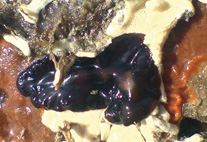Abstract
The species Ixodes aragaoi Fonseca was described as Ixodes ricinus aragaoi, and later placed in synonymy with Ixodes affinis. However, this synonymy was rejected and the subspecies was elevated to species, and named as I. aragaoi. Some researchers did not consider the validity of I. aragaoi and maintained the synonymy proposed until 1998 when I. aragaoi was revalidated, and it was suggested that Ixodes pararicinus could be a synonym. The aim of this study was to confirm the taxonomic validity of I. aragaoi by means of redescription of adults and molecular analysis. Morphological studies were performed by optical and scanning electron microscopy; types of I. aragaoi were compared with those of I. pararicinus from Argentina, and also with material of I. pararicinus from Uruguay and I. affinis from the United States. Mitochondrial 16S rDNA sequences were obtained for determining phylogenetic relationships based on maximum parsimony. Morphological and molecular differences between I. aragaoi, I. pararicinus from Argentina, and I. affinis confirm the validity of the first each of these species. The morphological similarities of I. pararicinus from Uruguay with I. aragaoi, and the small distance of nucleotide sequences between them, confirm that the Uruguayan ticks are in fact I. aragaoi and expand the geographical distribution of this species. Based on the specimens of Ixodes examined in the present study, from the same locality of the types of I. ricinus rochensis in Uruguay, we agree with the synonymy of this subspecies with I. aragaoi as previously reported. Finally, our analyses indicate that both I. aragaoi and Ixodes fuscipes, another South American tick species, belong to the I. ricinus complex, currently composed of 19 species.

